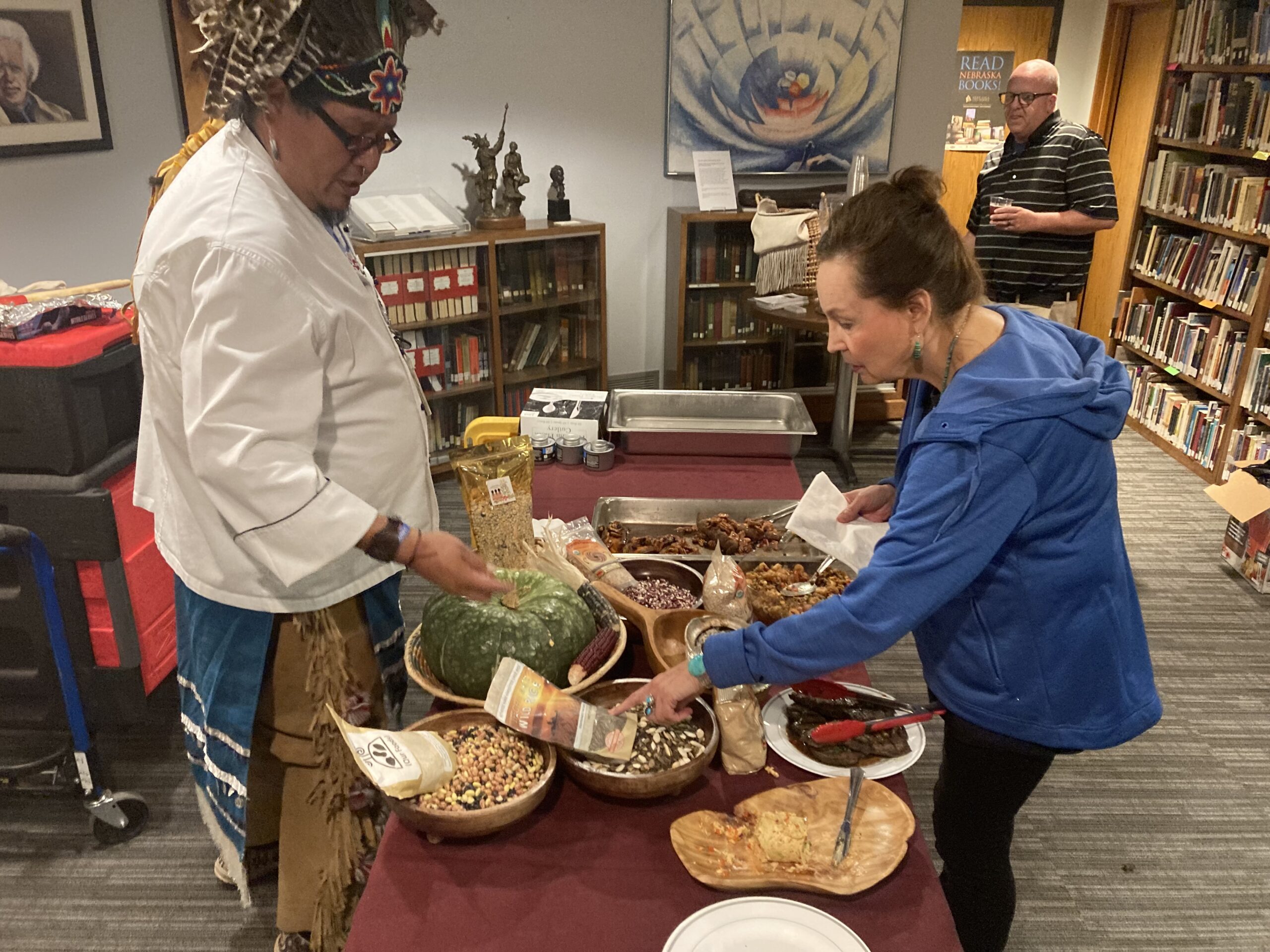Nebraska
Chef dishes out education on healthy eating along with Native American-‘inspired’ cuisine

BANCROFT, Nebraska — The first time Anthony Warrior was asked to cater a meal of Native American foods, his client requested fry bread.
Warrior responded that the deep-fat-fried bread dish wasn’t what Native Americans ate, but instead was something created during the Depression to eat.
“That was not our food. We didn’t have flour on the Plains,” said Warrior, an enrolled member of Absentee Shawnee tribes, who is also descended from the Muscogee (Creek) Nation and the Sicangu Lakota-Bad Nations.

Since that request, Warrior has been on a mission to educate people about healthy foods and to prepare what he calls “Native-inspired” dishes for dozens of events through his catering business, Warrior’s Palate.
Based in Santee
He works out of his home in Santee, on the northeast Nebraska reservation of the Santee Sioux, where he also serves as a human resource director for the Nebraska Indian Community College.
It has been an educational quest for Warrior, who grew up in Oklahoma watching his mother cook in a series of cafes and helping the women of his tribe prepare feasts for special events.
He dreamed of becoming a doctor, but he soon found out that his passion wasn’t tending to sick patients, but cooking.
Warrior eventually found jobs as a chef at Indian casinos from Oklahoma to New York State, where there was some demand for Native American dishes. But it was mostly dishes like Indian tacos, something else that tribes didn’t traditionally eat but were created later as a novelty.
‘What was your food?”
“When I was working with these tribes, I would ask, ‘What was your food?’” Warrior said. “A lot of them didn’t know, they were so removed from it.”
Even dishes that were well-known, such as bison and venison, were sometimes hard to find or were restricted from being served in a restaurant.
“It’s been a lifelong journey to discover what the tribes ate,” he said.
His queries led him to get involved with Native groups seeking to save heritage corn seeds so those varieties did not become extinct.
Today, he caters up to three meals a week, as well as giving presentations at schools across Nebraska and western Iowa.
There’s increased interest in Native American cuisine, in part inspired by the naming last year of an Oglala Lakota chef, Sean Sherman, as winner of a prestigious James Beard Award.
Warrior dresses in traditional Mohawk tribal garb — a gift from a Mohawk friend — and delivers a cautionary message about healthy eating.
“What’s on our plate we can’t call ‘food’ anymore,” Warrior said, terming sugar “one of the kingpin drugs of the world.”

The body doesn’t need three meals a day, seven days a week, he said, and when we eat today, we eat too much.
“The more sugar-based food we pump into our bodies, we create a still of alcohol,” Warrior said. “We’re creating that craving for a sugar high, and that is abuse of our bodies.”
He calls his dishes Native inspired because it’s so hard to find ingredients, produced by Native producers, to match. He uses ingredients used by indigenous people across the continent and into Central and South America.
“I only use ingredients that were known in the Americas,” Warrior said.
At a recent catered meal at the John Neihardt State Historic Site in Bancroft, Warrior dished up bison ribeyes, with charred onions and sweet pepper butter, corn hominy with tomatoes, sweet potatoes, maple encrusted pecans and dried fruit, and dried berries in chocolate wedges.
Became healthy via Native foods
He relies mostly on a small network of growers and foragers for ingredients. He has purchased corn grown by the Omaha and Kickapoo tribes, bison from a grower near Niobrara and wild rice harvested from the lakes of Canada and Minnesota.
Warrior’s personal story is dramatic — he once weighed more than 500 pounds and was diagnosed as diabetic.
But by avoiding processed foods and using intermittent fasting — as Native Americans would have done — he now weighs below 300 pounds and is looking to slim down more.
“Now my biggest drive is my children, to break them from the curse of unhealthy foods,” Warrior said. “I show them that if they eat better, they can feel better.”
For the past two summers, he has cooked and taught at a “Cultural Connections” youth camp at the Neihardt Center for Native American students. He regularly presents programs at schools and universities and teaches a cooking class in Santee.
Food can drive health
“You’ve got to keep yourself healthy,” he said. “Food can drive that.”
Warrior, however, said his catering customers are most often non-Native.
“(Natives) say ‘We’ve been eating that for thousands of years, we don’t want that any anymore,’ ” he said. “It’s really tough to sell the food back to the Natives.”
But he won some converts three years ago in Sioux City, Iowa, after the request for fry bread.
“Just trust me,” he told the catering customer, who was holding a family reunion.
So he prepared a meal of hominy corn grits, beans, squash, braised bison, some smoked duck with wild rice and fish.
His client loved it.
“She said ‘I never knew this was Native food,’” Warrior said.













You must be logged in to post a comment Login